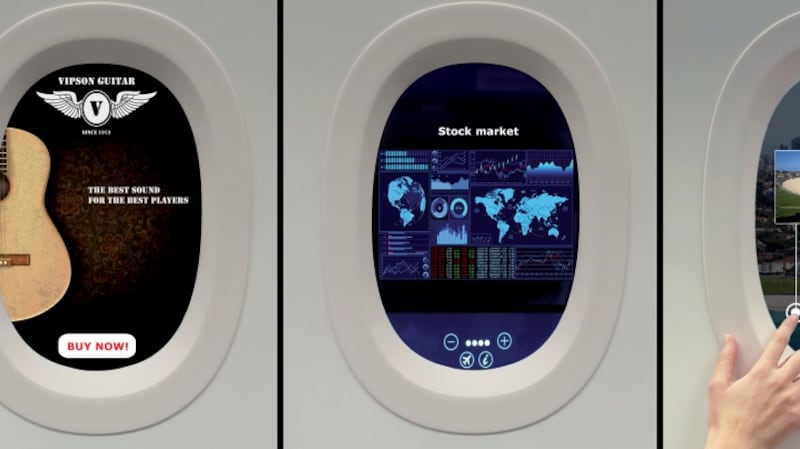One of the odd – and let’s face it, really annoying – things about air travel is that it hasn’t got any faster in decades.
With the exception of the ill-fated Concorde, which did make an enormous difference to journey times for that tiny percentage of the world who could afford a ticket, the length of time it takes to fly from A to B has barely changed since jet engines first started ferrying passengers to and fro more than 60 years ago.
If anything, with all the palaver involved in getting through an airport with the enhanced security measures and the urgent need to put deadly items like shoes and belts and shampoos into special boxes and bags ahead of exhaustive and exhausting screenings, getting to A to B takes longer now than it did 20 years ago.
Admittedly the number of stops a plane needs to make has been reduced as engines have improved. A giant leap on that score was made last month when a Qantas plane took off in Western Australia and only touched the ground again when it reached London . But it's not like that plane was travelling any faster, it just was carrying more fuel.
In the absence of more speed, airlines have instead focussed on enhancing the flying passenger’s experience, and while many improvements have been slow in coming, flying – particularly long-haul flying – is a lot more pleasant than it once was.
There are individual television screens for all passengers, wifi on many planes (sometimes it even works) and seating has become slightly more comfortable.
It is an entirely different story when it comes to short haul. Passengers are now herded like cattle with carry-on onto uncomfortable plans with lurid interiors and then cajoled into buying grim food at sky-high prices. If anything, short haul passengers are getting less comfortable with the passage of time. The fares are a whole lot cheaper mind you.
Most of the serious air travel enhancements remain the preserve of the well-heeled who turn left when they board a big plane instead of turning right in the direction of the cheap seats.
Business class has improved dramatically in recent years. There are seats that turn into beds, flat screen tellies, screens separating you from your fellow travellers and real metal knives and forks with which you can eat your dinner.
But there are lot of enhancements coming down the tracks and, if aviation crystal ball-gazers are to be believed, within five years the flying experience will be barely recognisable from what is once was.
A French company called Vision Systems has come up with a notion that is either brilliant or utterly horrendous. They have worked out a way to transform the windows panes on planes to touch screens. Instead of staring out at the black void as you fly through the dead of night you could soon be using your window to play online scrabble with strangers in Wisconsin or checking your stock prices or buying yourself a nice outfit on ASOS.
And the screens won’t be at all annoying when you are flying over the Alps on a crisp clear morning and unable to work out how to turn them off.

Artificially intelligent seats are coming down the tracks by some accounts. These smart seats will assess your every move and make minor adjustments to enhance your comfort. The smart seats will work out how to give you the most leg room without sparking an air rage incident between you and the person sitting behind you and will ensure your arm rest is in exactly the right place at all times.
Robotic aircrew will be manning the drinks trolley and will be able to deliver you your booze and your Pringles using some class of weird onboard monorail – as long as you have pre-ordered it.
And you can expect smart lighting to be rolled out soon. The lights will talk to your seat to get a sense of when you are sleeping and then adjust themselves accordingly. They will also dim and sparkle depending on the time zone, with some of the enhancements aimed at reducing the impact of jetlag on your weary body.
Speaking of weary bodies, sleepers are coming. Soon airlines will start renting reclining beds – the kind commonly found in business and first class – to people travelling economy. The thinking behind it is if you’re flying for 14 hours, you’re probably not going to want a bed for all that time so why pay for it?
Instead you will be able to hire a sleepers for maybe five or six hours and then once your time is up you’ll be rudely awakened and sent back from whence you came.
And where will the beds bed? One of the more exotic ideas that could soon be a reality will see passengers diverted to the cargo hold instead of the top of the plane. Sounds grim right? Well, it isn't Airbus plans to create a "hotel-like living space".
The plan was announced at the recent Aircraft Interiors Expo in Hamburg, the home of plane talking and could be taking off by 2020.
For its demo it created a six-bed sleeping berth as well as a dining area and an office space worthy of Air Force One.
But airlines will not be confined to the demo model and in addition to capsule-style hotel rooms, they will be able to add conference rooms and gyms. Because who doesn’t want to be hurling kettle bells towards the heavens as they fly eight miles high over the earth?











